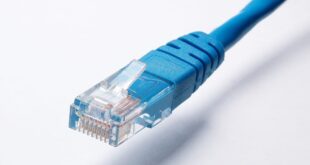3) The Top 20 Best Practices for Cyber Defense in 2021
Introduction
As technology continues to rapidly evolve, staying ahead of cyber threats is crucial. In 2021, implementing effective cyber defense practices has become more important than ever before. From regularly updating your software to prioritizing employee training and education, here are the top 20 best practices you can follow for a more resilient cyber defense system.
1. Strengthen Your Network Security
One of the most crucial steps you can take is to strengthen your network security. Use robust firewalls, encryption, and secure Wi-Fi protocols. Regularly assess your network’s vulnerabilities and fix any weak links.
2. Utilize Strong Passwords and Multi-Factor Authentication
Ensure that your passwords are long, complex, and unique for different accounts. Implement multi-factor authentication whenever possible to add an extra layer of security.
3. Regularly Update Software and Systems
Keep your software, operating systems, antivirus programs, and other security tools up to date. Regularly patch vulnerabilities to prevent attacks from exploiting any weaknesses.
4. Implement Robust Email Security Measures
Emails remain a common entry point for cyberattacks. Use advanced spam filters, secure email gateways, and educate employees about phishing and other email-based threats.
5. Backup Your Data Routinely
Regularly backup all your important data and ensure that it is stored securely and separately from your main system. This helps protect against data loss from cyber incidents.
6. Define Clear Security Policies and Procedures
Create comprehensive security policies and procedures that outline the proper handling of sensitive data, risk assessment, incident response plans, and remote working protocols. Regularly review and update these policies as needed.
7. Conduct Regular Security Assessments and Audits
Engage in cyber risk assessments and audits to identify vulnerabilities and measure your cybersecurity maturity. This allows you to determine areas that require improvement.
8. Maintain Vigilance Against Insider Threats
Awareness of insider threats is crucial. Implement proper background checks, employee education programs, and access controls to prevent unauthorized access or data leaks.
9. Keep Employees Educated and Train Regularly
Human error is often the biggest contributor to cyber incidents. Continuously train employees on best practices, potential threats, and how to handle cyber situations to minimize risks.
10. Practice Least Privilege Principle
Adopt the least privilege principle, giving users only necessary access privileges. This helps limit damage in case of account compromise or network breach.
11. Regularly Monitor and Analyze Network Traffic
Effective monitoring and analysis of network traffic help identify abnormal activities and potential threats. Implement advanced intrusion detection and prevention systems.
12. Establish an Incident Response Plan
Create an incident response plan that details the steps to be taken in case of a security breach. This ensures timely and efficient response, minimizing the impact of an incident.
13. Implement Continuous Vulnerability Assessments
Adopt a proactive approach to cybersecurity by performing regular vulnerability assessments and penetration testing. Find vulnerabilities before attackers do.
14. Apply Cloud Security Measures
If you use cloud services, ensure proper security measures, such as encryption, access controls, and application segregation, are in place to protect your data.
15. Install Robust Endpoint Protection
Endpoint protection software blocks malicious threats from entering your devices. Use trusted antivirus and anti-malware software to safeguard your system.
16. Segment Your Networks
Segmenting your networks provides an additional layer of protection by isolating different parts of your system. Separate internal networks, IoT devices, and guest networks to mitigate risks.
17. Leverage Artificial Intelligence and Machine Learning
Utilize AI and machine learning technologies to enhance threat detection and response capabilities. These cutting-edge technologies can help with real-time decision-making.
18. Engage a Cybersecurity Vendor
If resources allow, consider partnering with a reliable cybersecurity vendor to leverage their expertise and ensure comprehensive protection.
19. Enable Security Monitoring and Incident Reporting
Setup security monitoring tools and establish an incident reporting mechanism to promptly address potential threats and maintain a record for future analysis.
20. Stay Updated on the Latest Threats and Trends
Cyber threats are continually evolving. Keep yourself informed about the latest threats and emerging trends in cybersecurity by following industry news, attending events, and participating in relevant forums.
The Future of Cyber Defense
By following these best practices and adapting to the ever-changing technology landscape, you can bolster your organization’s defense against cyber threats. Remember that cybersecurity is a continuous process, and staying proactive is the key to protecting yourself in 2021 and beyond.
 Mind Uncharted Explore. Discover. Learn.
Mind Uncharted Explore. Discover. Learn.



